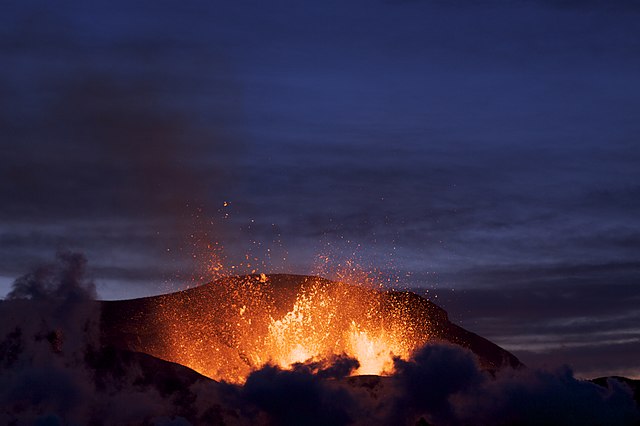Tonga volcano eruption helps space scientists research Mars volcanoes
January 27, 2022
The recent eruption of the submarine Hunga Tonga-Hunga Ha’apai volcano on January 14, has provided planetary scientists with a more intimate understanding of how volcanoes formed on other planets in the solar system, such as Mars and Venus. According to Nature News, this eruption is providing planetary scientists with crucial insight on how water and lava dynamically interact.
The volcanic island surrounding the Tonga volcano had begun to form from ash and lava expelled from the undersea volcano back in 2015. Volcanic islands typically last for only months, but Hunga Tonga-Hunga Ha’apai lasted for years. This violent eruption was preceded by a series of smaller eruptions in December, which increased the size of the island. It caught the attention of James Garvin, Chief Scientist at NASA’s Goddard Space Flight Center in Greenbelt, Maryland. According to Garvin, “We don’t normally get to see islands form, [but this one offered] a front-row seat”.
Garvin’s team has been using satellite observations and seafloor surveys for years to study how volcanic islands form, erode, and persist. He wanted to use that information to understand how conical volcanoes might have formed on Mars in the presence of water billions of years ago. The marine environment of the volcano also provides crucial insight into the movement of lava in a low-gravity environment similar to that of Mars. According to Joseph Michalshi, a planetary scientist at the University of Hong Kong, many volcanoes on Mars are thought to have erupted with steady flows of lava, but some could have been explosive like Hunga Tonga-Hunga Ha’apai.
Garvin is hopeful that the magma chamber under the Earth’s crust that had formed Hunga Tonga-Hunga Ha’apai will create another island for researchers to study in order to gain more information about the formation of geological structures on nearby planets.



